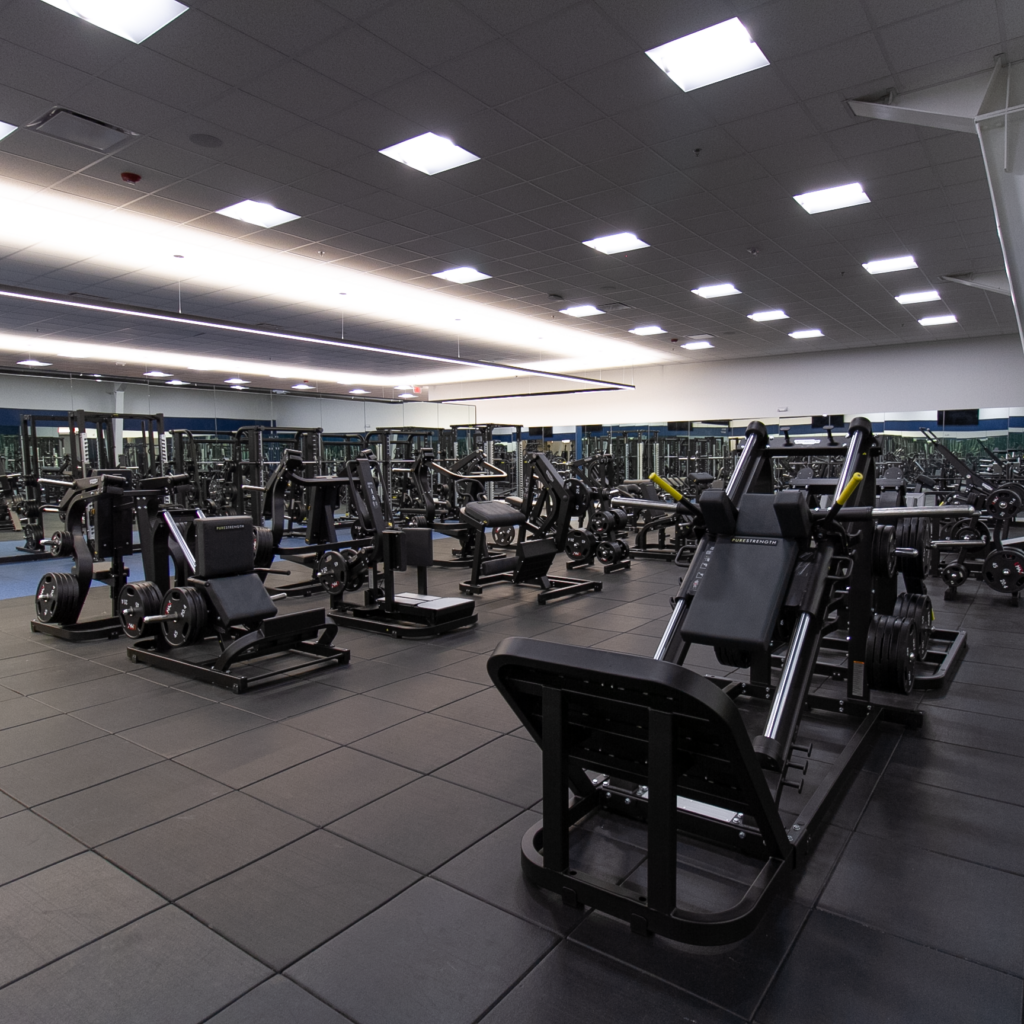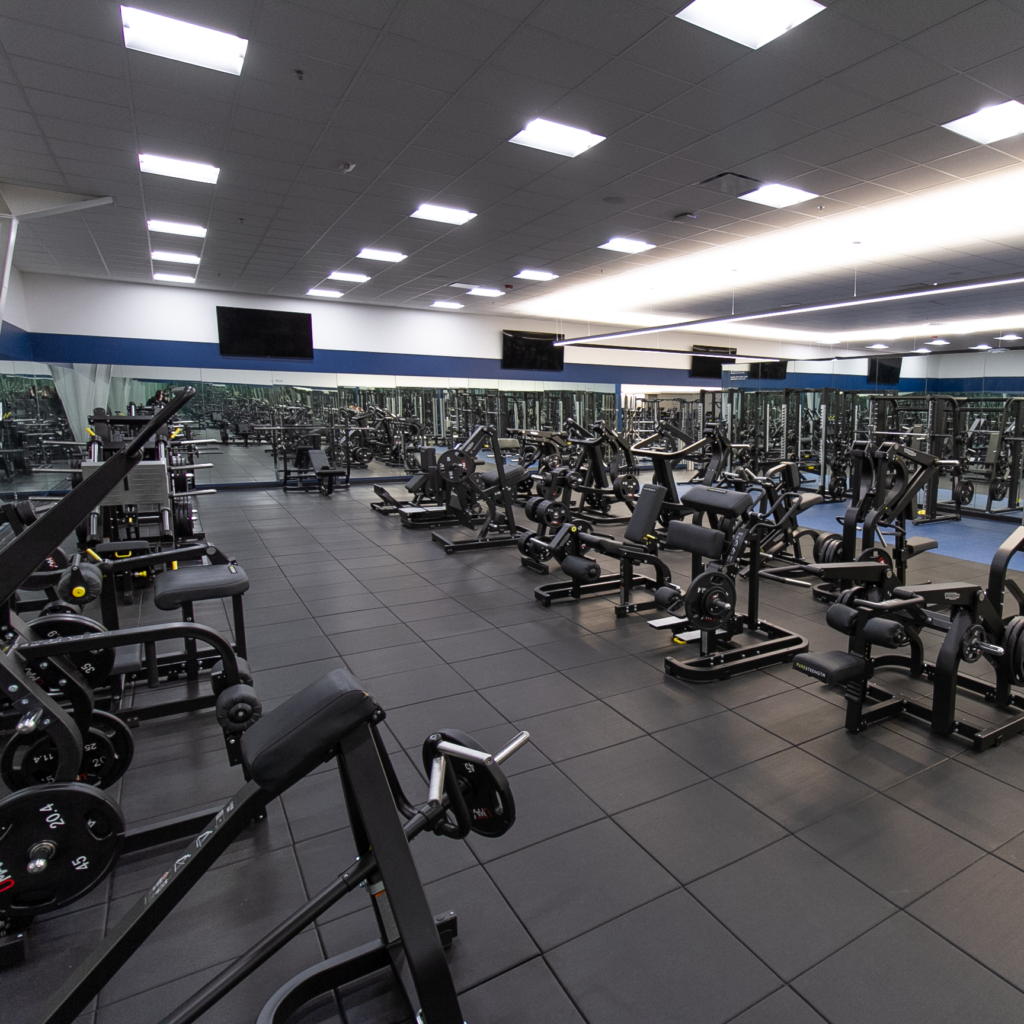WRITTEN BY WOODSIDE DIRECTOR OF TRAINING, JOHN BEANE
Next up in our series of fitness concepts we are going to tackle increasing lean body mass which we refer to as hypertrophy, or what your favorite non-weight-reracking gym bro likes to call…GAINZ. It will be difficult to tackle this topic in short form so expect several more discussions around all things hypertrophy in the coming months. Think of this as an introduction or an overview of a very complex topic. When we think of hypertrophy, we typically envision a bodybuilder type physique or that of a professional athlete who needs large amounts of mass to perform at peak levels and mitigate injury. However, when you take a step back and look at hypertrophy for what it actually is you will learn how crucial it is for overall wellness, an increased health span and optimal functioning in everyday activities. To get a better idea of what we are talking about let’s define hypertrophy. By the way, it is important to point out that there is absolutely nothing wrong with wanting a bodybuilder physique and they are some of the most dedicated athletes you’ll ever come across. Just don’t leave them alone around your grilled chicken.
Hypertrophy – an enlargement of an organ or tissue from the increase in size of its cells.
So now that we know the definition of hypertrophy let’s put it into the context of training. Hypertrophy in fitness is considered an adaptation, and we know in many, if not all, cases of adaptation a stressor needs to be presented. Now we need to know what the stressor is to induce the adaptation of hypertrophy. In the case of hypertrophy, the stressor is you putting load on the body either globally (compound) or locally (isolated), which can be done in several ways, including bodyweight exercises, free weights, cables, plate loaded equipment, etc. There are three underpinning factors that contribute to hypertrophy.
- Mechanical Tension – induced tension produced both by force generation and stretch or the force that you apply to muscles through a form of resistance or weights
- Metabolic Stress – a physiological process that occurs during exercise in response to low energy that leads to metabolite accumulation (lactate, phosphate inorganic (Pi) and ions of hydrogen (H+)) in muscle cells
- Muscle Damage – localized damage to muscle tissue which, under certain conditions, is theorized to generate a hypertrophic response. The jury is still out on this one.

Hopefully you’re still awake at this point! If you are, what we are essentially saying is that if you resistance train safely with correct form and allow yourself to recover adequately you will most likely see muscle growth or maintain existing muscle as much as your body’s natural progression of aging processes will allow. As we mentioned earlier there are several benefits to having sufficient amounts of lean tissue. These benefits include: an increase in metabolic rate, an increase in bone density, a decrease in injury risk and crushing your outfit at the Midsummer party.
Earlier in this article we named several forms of resistance training. Each of these modalities presents several unique benefits and can be incorporated as part of a complete program. For the purposes of this article, we are going to focus on plate loaded equipment.
Plate loaded equipment has been a staple in clubs and gyms for decades now and has several useful benefits including variability in loading, potential uni-lateral loading, safety of a fixed path with correct settings and the ability to lift at heavier loads without necessarily needing a spotter. Whether you’re new to training or a seasoned lifter, our plate loaded equipment is an excellent option to incorporate into your program. Technogym has designed a fantastic line of equipment that is safe, efficient and biomechanically efficient for resistance training. Below are a few sample protocols utilizing the plate loaded equipment. Make sure to check out our video library for demos or contact us in the Training department for more information. Again, this is a very complex topic so please keep an eye out for future posts on the benefits and science of hypertrophy.

SAMPLE PROTOCOL
Plate Loaded Chest Press
Frequency | Sets | Reps (RIR) | Tempo | Rest |
Day 1 | 4 | 8-10 (2) | 3-0-2 | 2-4 minutes |
Day 2 | 4 | 15-20 (2) | 2-0-2 | 2-3 minutes |
Sample 3 Day Program Utilizing Plate Loaded Equipment
We typically like to incorporate a variety of forms of resistance training in our programs, but the example below is what a program just using plate loaded equipment may look like. A pro tip here would be to take the framework of this weekly program and switch out some of the plate loaded movements for the equivalent pattern using another modality i.e. the Leg Press for your favorite Squat variation or the Incline Press for a Dumbbell Incline Press.
Movement | Sets | Reps | Tempo | Rest |
Leg Press | 4 | 10 | 3-0-2 | 2-4 minutes |
Seated Row | 3 | 10 | 3-0-2 | 2-3 minutes |
Hamstring Curl | 3 | 12 | 2-0-2 | 2-3 minutes |
Incline Press | 3 | 12 | 3-0-2 | 2-3 minutes |
Calf Raise | 2 | 15 | 2-0-2 | 1-2 minutes |
Movement | Sets | Reps | Tempo | Rest |
Seated Chest Press | 4 | 10 | 3-0-2 | 2-4 minutes |
Hip Thrust | 3 | 15 | 2-0-2 | 2-3 minutes |
Wide Grip Row | 3 | 12 | 3-0-2 | 2-3 minutes |
Leg Extension | 3 | 12 | 2-0-2 | 2-3 minutes |
Tricep Dip | 2 | 15 | 2-0-2 | 1-2 minutes |
Movement | Sets | Reps | Tempo | Rest |
Hack Squat | 4 | 10 | 3-0-2 | 2-4 minutes |
Pulldown | 3 | 15 | 3-0-2 | 2-3 minutes |
Hip Extension | 3 | 10 | 2-0-2 | 2-3 minutes |
Overhead Press | 3 | 10 | 3-0-2 | 2-3 minutes |
Hip Abduction | 2 | 15 | 2-0-2 | 1-2 minutes |
Our Training team can help you incorporate plate loaded equipment into your workout routine. To learn more click here or email us.
References
Schoenfeld, Brad J. The Mechanisms of Muscle Hypertrophy and Their Application to Resistance Training. Journal of Strength and Conditioning Research 24(10):p 2857-2872, October 2010. | DOI: 10.1519/JSC.0b013e3181e840f3
Thomas MH, Burns SP. Increasing Lean Mass and Strength: A Comparison of High Frequency Strength Training to Lower Frequency Strength Training. Int J Exerc Sci. 2016 Apr 1;9(2):159-167. PMID: 27182422; PMCID: PMC4836564.
Abernethy, PJ, Jürimäe, J, Logan, PA, Taylor, AW, and Thayer, RE. Acute and chronic response of skeletal muscle to resistance exercise. Sports Med 17: 22-38, 1994


